Touch Easy Home Icons for Apps Are Enabled but Hidden on Galaxy S6
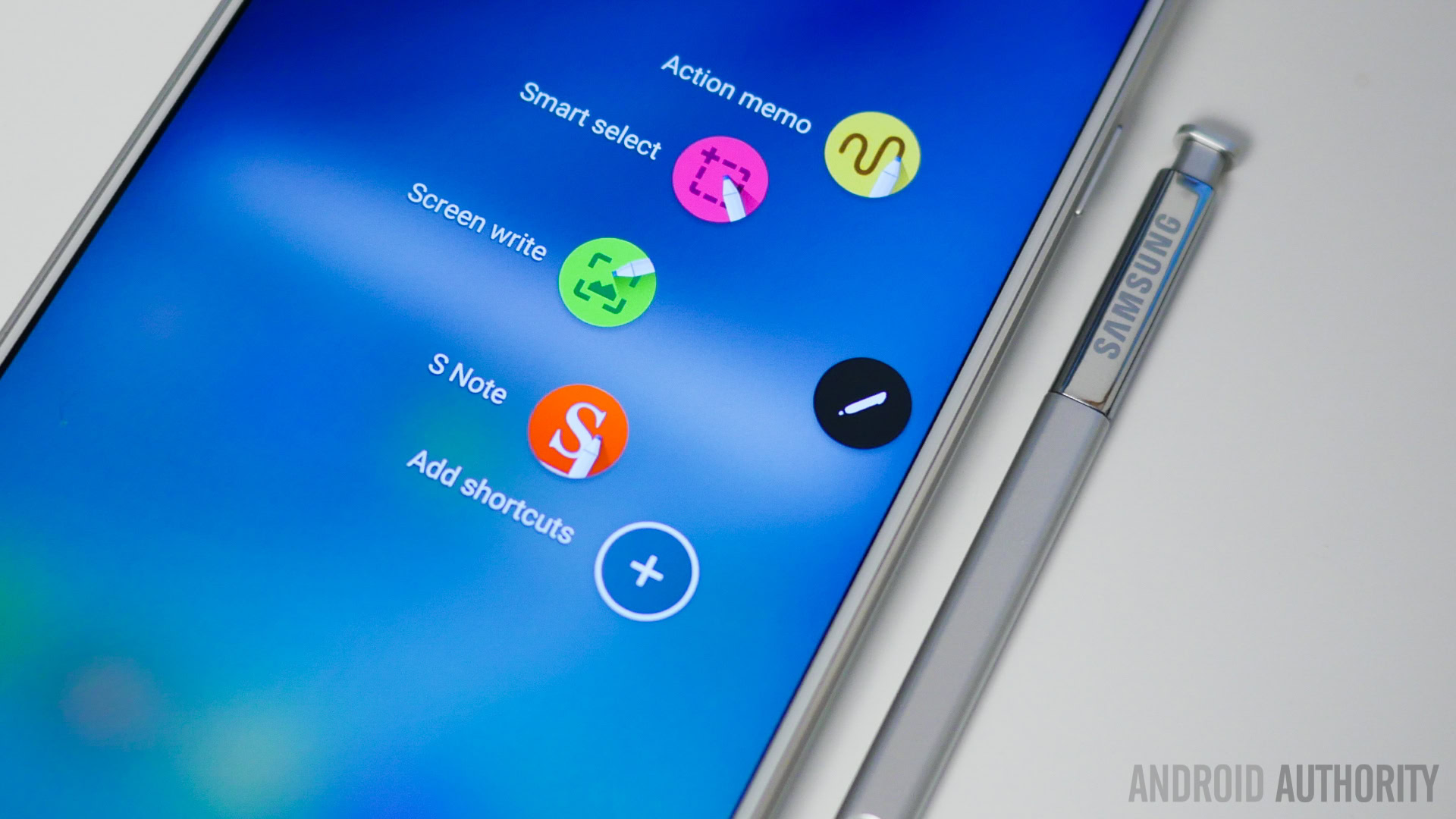
Samsung's TouchWiz interface seems to be one of those things that polarizes people, you either love it or hate it. One of the criticisms of TouchWiz was that it was slow and bloated. Thankfully Samsung listened to its customers and the version of TouchWiz that is on the Note 5 and the Galaxy S6 has been slimmed down. But that doesn't mean it has been crippled. There are lots of useful features and aids built-in to TouchWiz and so to help you get the best from the software, here are our TouchWiz tips and tricks for the Note 5 and Galaxy S6.
Power saving modes
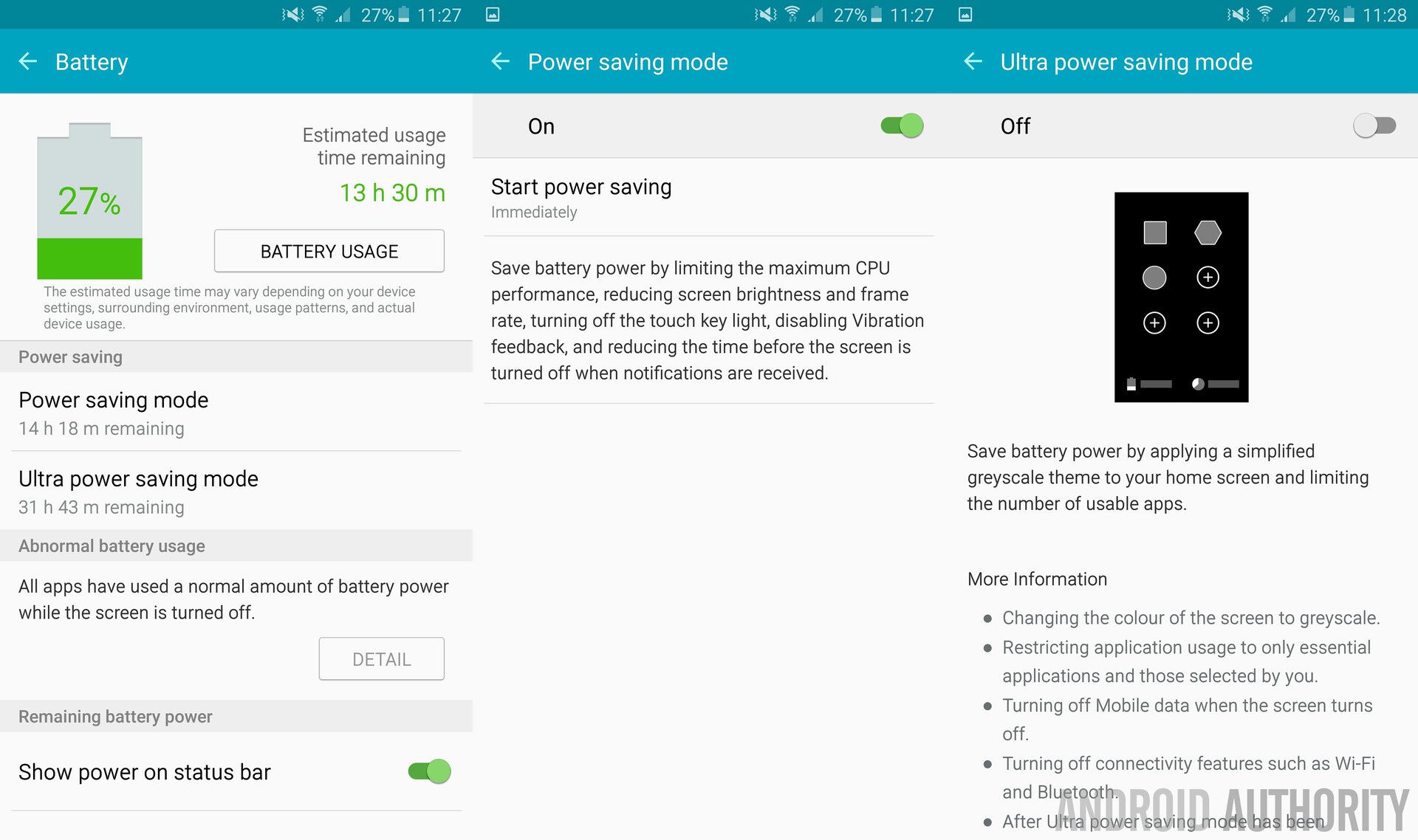
Now that the Note 5 and the S6 have non-removable batteries, the usefulness of the built-in power saving modes has increased. The Note 5 offers two battery friendly modes: Power saving mode and Ultra power saving mode. The first saves battery power by limiting the CPU speed, reducing the screen brightness, and by turning off a few things like the touch key light and vibration feedback. You can switch it on manually by going to Settings -> Battery -> Power saving mode, or you can configure it, from the same menu, to come on when the battery is at 50%, 20%, 15 or 5%.
Ultra power saving mode is a bit more drastic, it switches the phone over to a greyscale theme, turns off Wi-Fi and Bluetooth, disables mobile data when the screen is off, and restricts you to some essential apps like phone and messaging. According to the estimations you should get double the battery life out of the ultra power saving mode as you do from power saving mode.
Easy mode
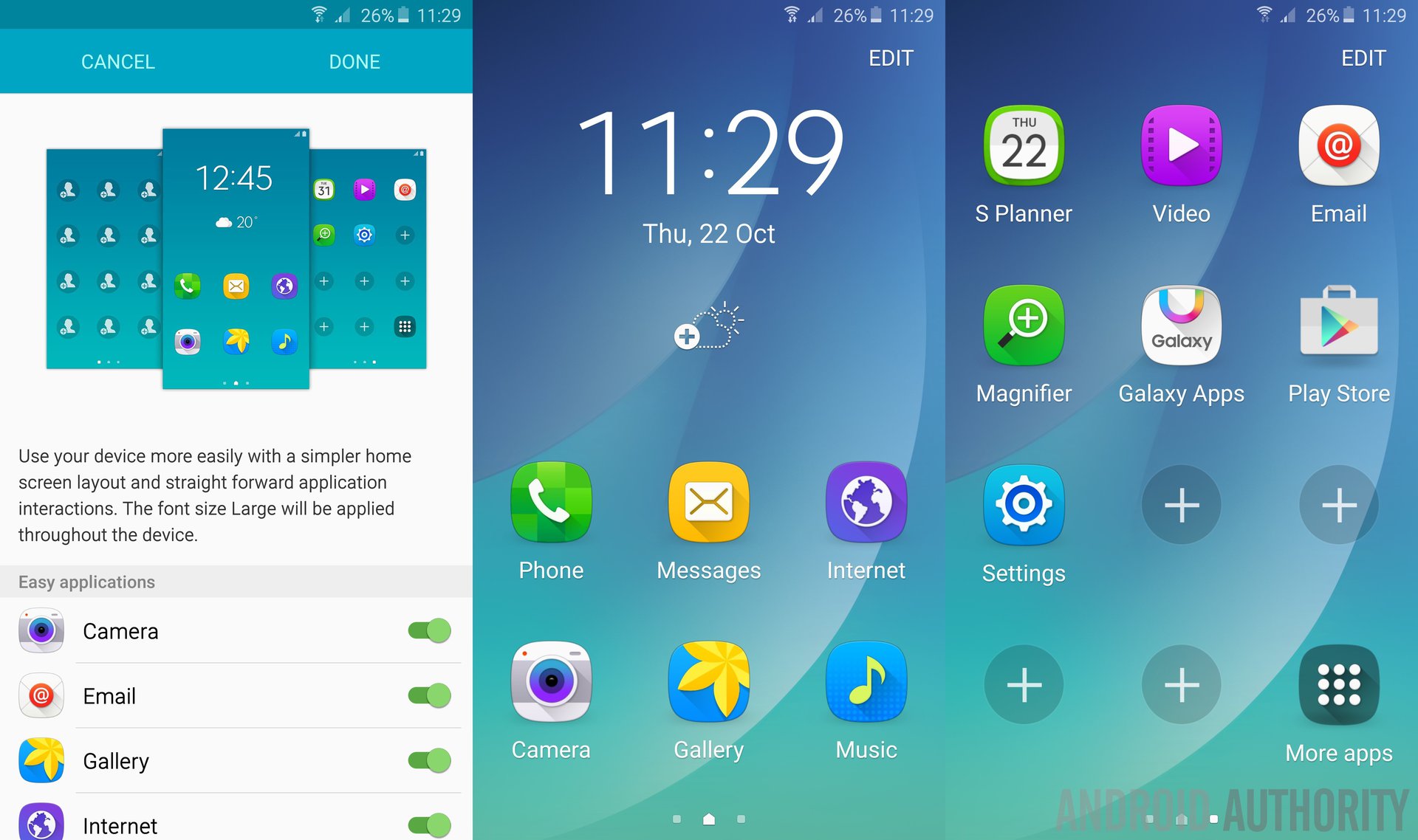
When using the Note 5 or S6 in ultra power saving mode the UI is changed so that you only get access to a few selected apps, there is no app drawer and no screens to switch between. If you would like something similar during every day usage then Samsung has included Easy mode just for you.
Unlike the ultra power saving mode, non of the functionality is limited, however the home screen takes on a much simpler layout and the font size is switched to large so that icons and items can be found quickly. To enable Easy mode go to Settings -> Easy mode. You can also configure which of Samsung's apps take on the easy mode style, which in practice means they just use the large font. The apps drawer is available, however it is moved to the first screen on the right. The first screen to the left is reserved for adding icons for people in your contacts.
Do not disturb
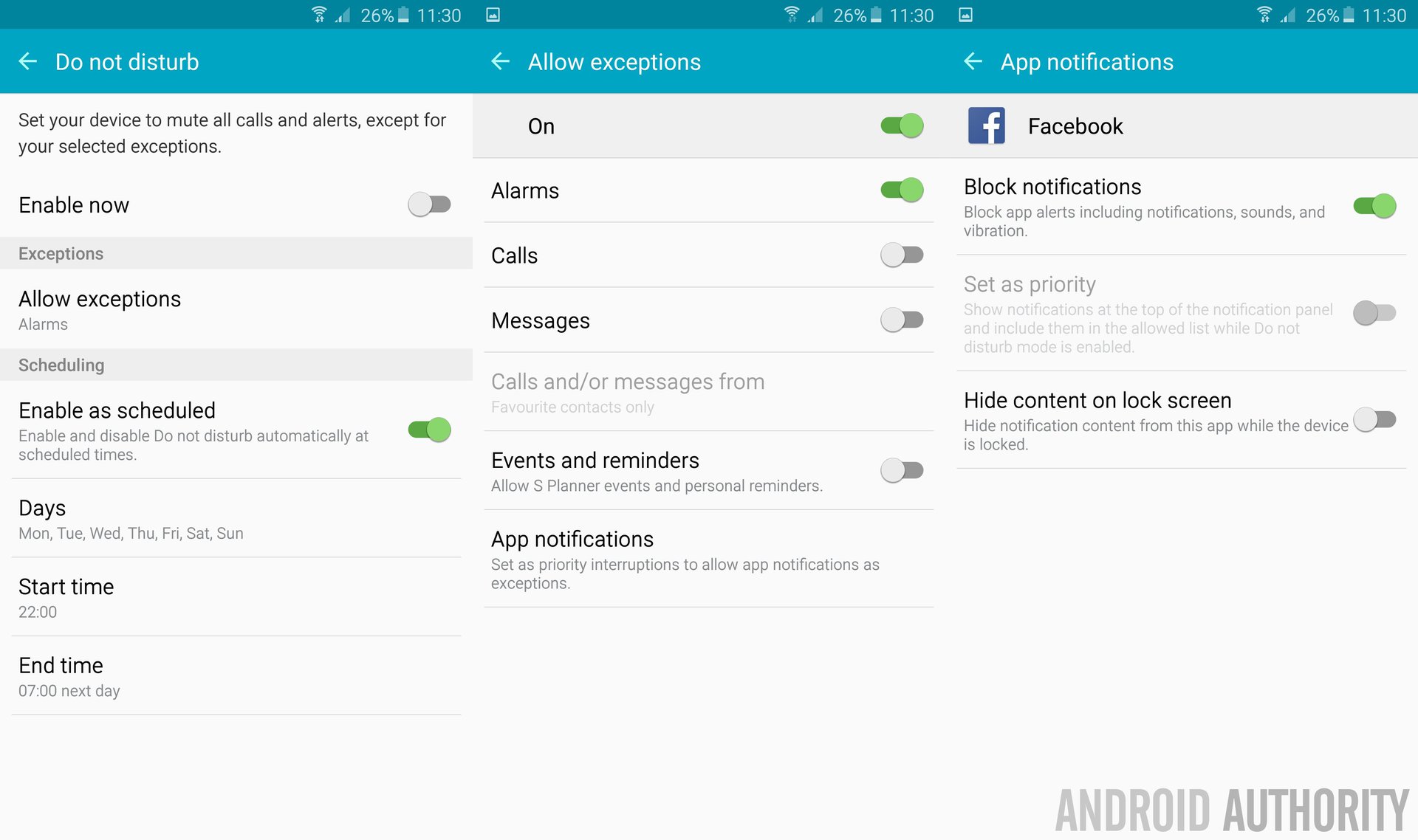
I don't know about you, but one of the things that annoys me about the smartphones and tablets in our house is notifications that go off in the middle of the night. One of the Jurassic park games uses the roar of a dinosaur when it sends a notification. There have been a few nights when all is quiet, you could hear a pin drop and then this T-Rex roar comes from one of the kid's tablets. Very annoying…
Luckily Samsung as built-in a "Do not disturb" mode into TouchWiz. Although Lollipop has its priority mode and Marshmallow has a "Do not disturb" mode, the TouchWiz version is very comprehensive. You can find it under Settings -> Sounds and notifications. You can enable and disable it manually or there is a scheduling function which allows you to configure when the phone should enter and exit the "Do not disturb" mode, say between 11PM and 7AM. Once enabled all calls will be muted and notifications will be silenced. However you can set some exceptions. By default all alarms are allowed, however you have full control over what is muted and what is not. You can let all calls through, or just calls from people in your favorites list. It is the same for messages. You can also explicly allow notifications from S Planner to come through.
If you tap on "App notifications" (under Settings -> Sounds and notifications -> Do not disturb -> Allow exceptions) you can configure apps individually to block notifications; set them as priority, which means they will appear at the top of the notification panel and they will be allowed even when in "Do not disturb" mode; or hide the notification from the lock screen. In fact it is the same functionality as you find under Settings -> Sounds and notifications -> App notifications.
One-handed operation (Note 5 only)
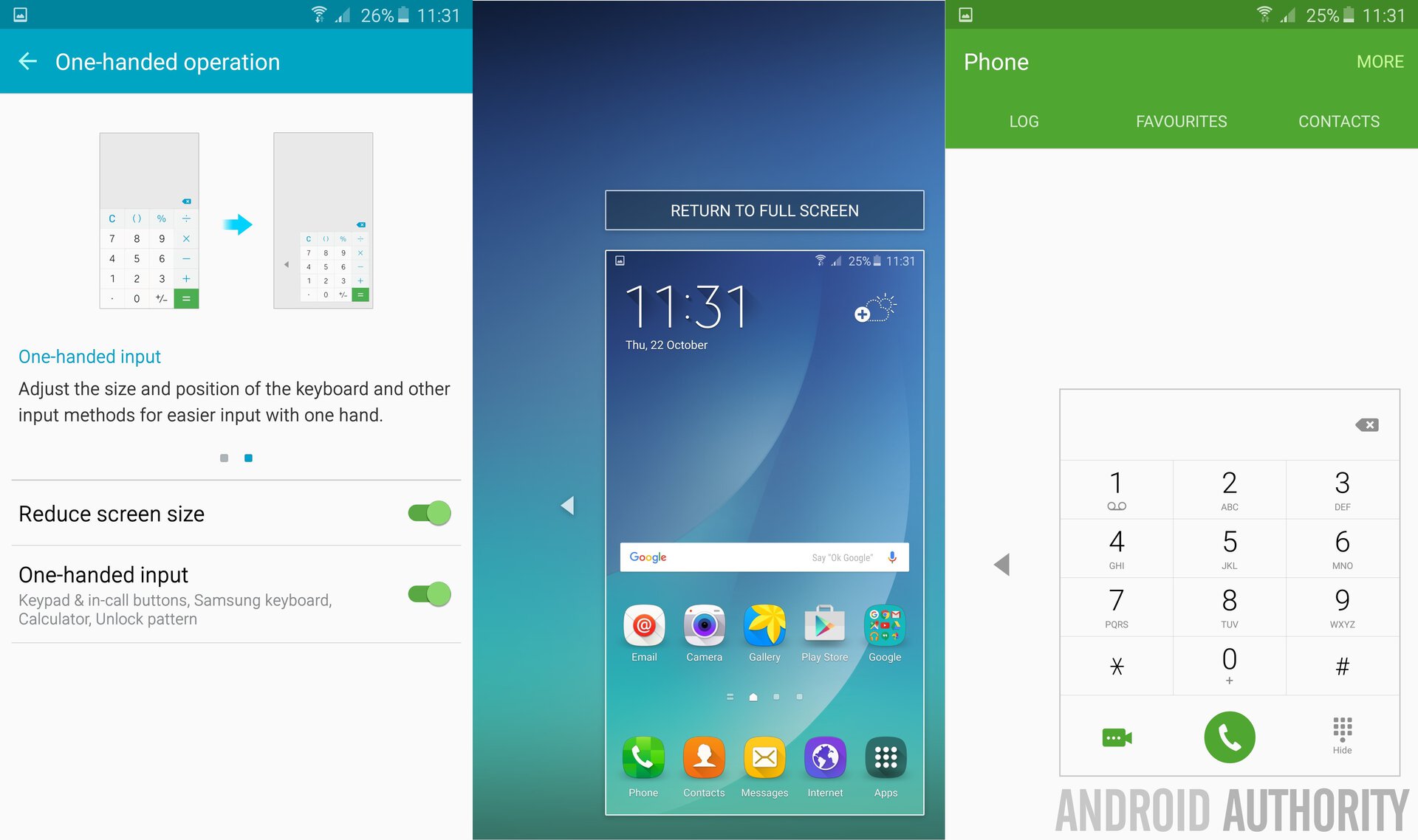
There is no denying it, the Note 5 is a big phone and you really need two hands to use it. However Samsung has built in a couple of helps for those moments when one-handed use is essential. If you go to Settings -> Display -> One-handed operation you will see two items which can be enabled. The first is "Reduce screen size" and the second is "One-handed input". The former reduces the size of the display when you press the Home key three times in quick succession, like a triple click. The reduced screen size is easy to use with one hand and you have the option to switch it to the left side or the right side, depending on which hand you are using.
The other option will permanently reduce (without having to triple click the Home key) the size of the various input methods including the keyboard, the keypad, and the unlock pattern. What this means is that throughout the UI you are able to use one hand to type, regardless of the app. The only exception is apps which implement their own keyboards, like some types of game.
Your favorite apps
Note 5
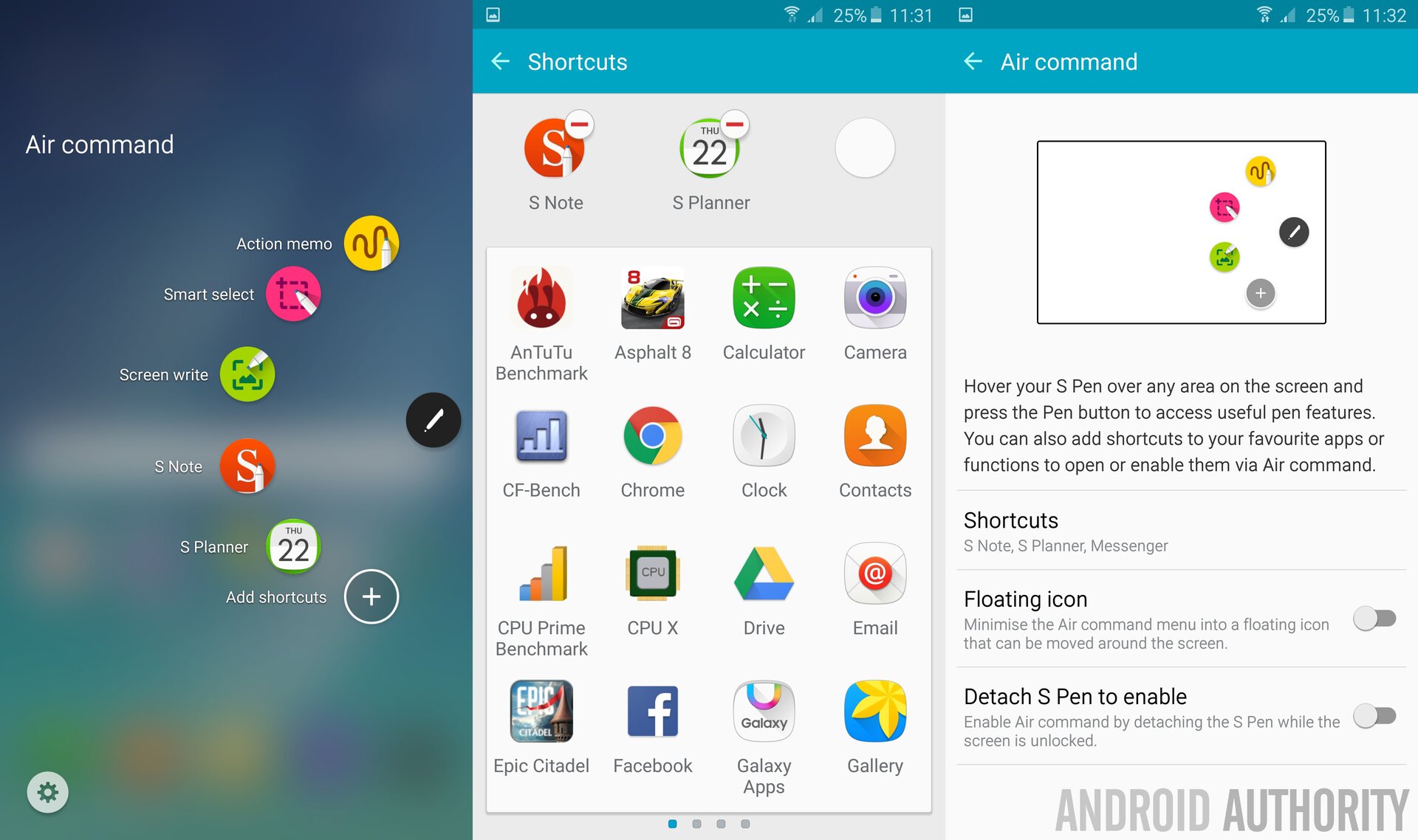
One of the unique features of the Note series is of course the S Pen. By default, when you take the pen out of the phone then Air command will start, a quick launcher which gives you immediate access to some of the S Pen enabled apps. However you can also add your own apps to Air command making it easy to launch your favorite apps.
To add your own apps from within Air command, tap on the large plus sign labeled "Add shortcuts" and then tap the app you want from the apps shown. Alternatively you can tap on the settings cog on the bottom left-hand side of Air command and then tap on Shortcuts. This is the same menu as Settings -> S Pen -> Air command -> Shortcuts.
As a side note, if you don't have the floating Air command icon enabled nor is Air command configured to launch when you remove the pen, you can always access Air command by hovering the S Pen over the screen and pressing the pen button.
Galaxy S6 Edge
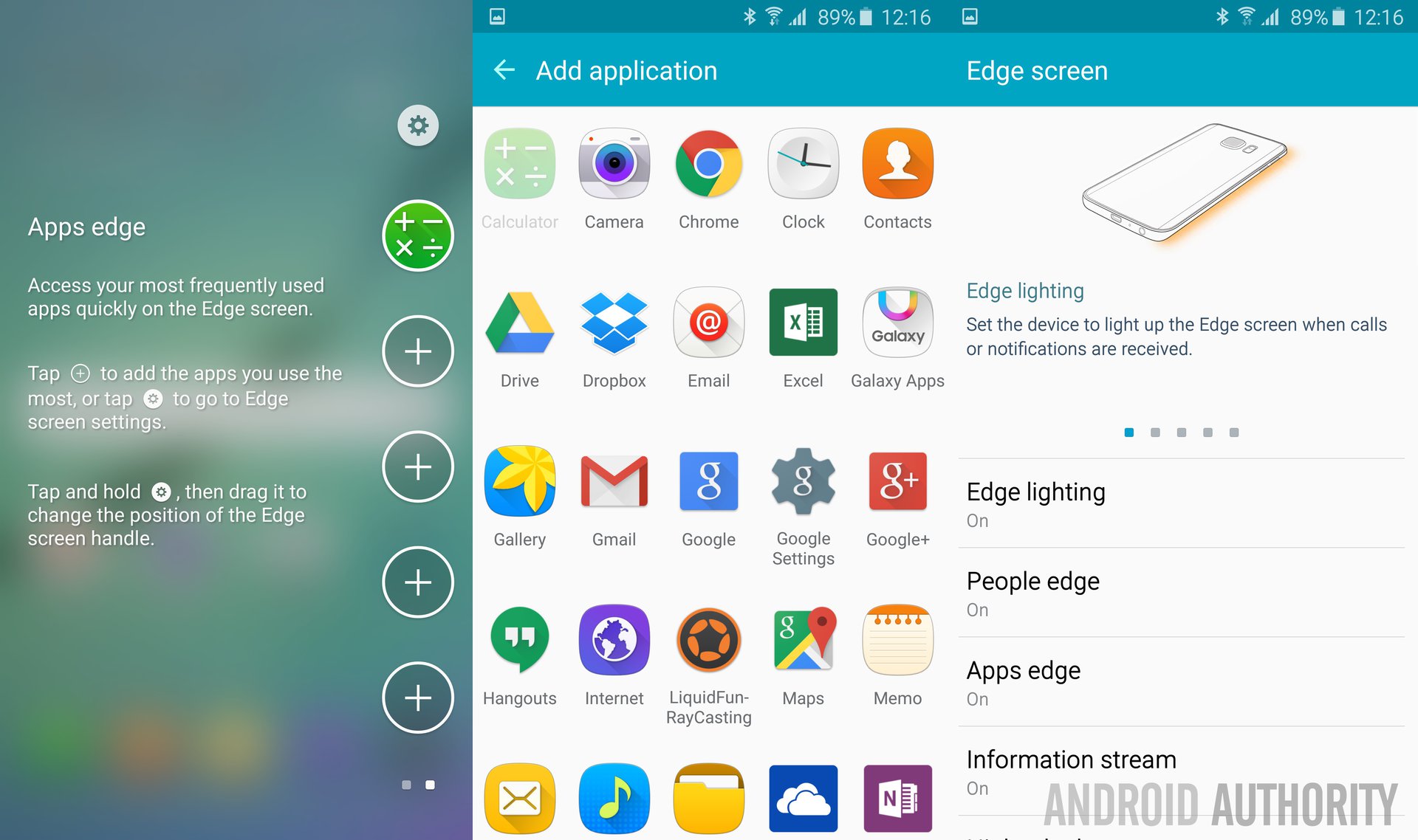
Although the Galaxy S6 doesn't have an S Pen and Air command, if you own an "Edge" version then you have access to Apps edge. To get to it drag, the Edge screen handle and then swipe to the left. Tap the plus sign to add the apps you use the most or alternatively go to Settings -> Edge screen.
In the settings you can also enable or disable Apps edge as well as People edge, plus you can set the Edge screen position or configure which Edge screen notifications are allowed.
Use Screen write to capture a long page (Note 5 only)
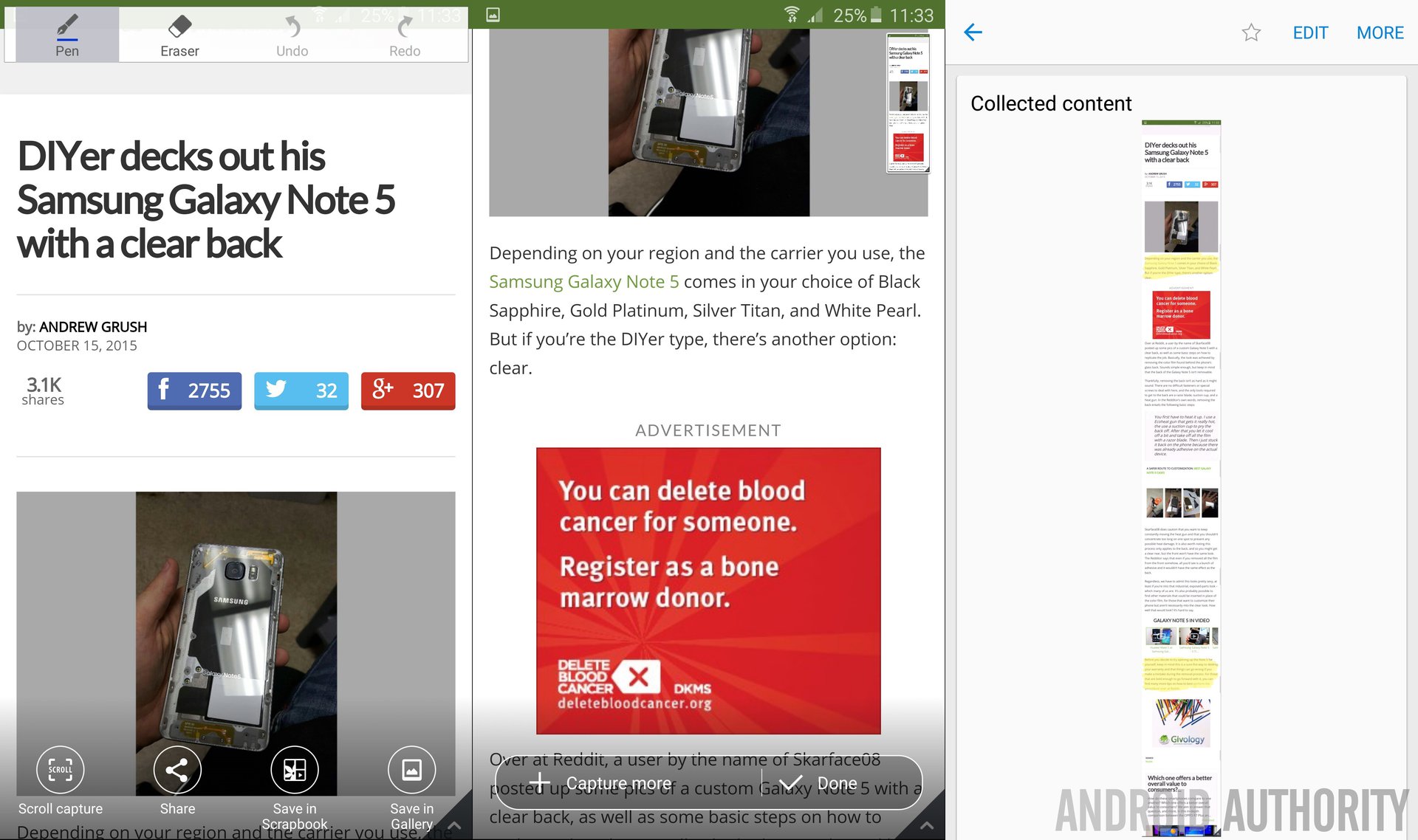
One of the cool S Pen apps that comes with the Note 5 is Screen write. It allows you to take a screenshot and then use the S Pen to annotate the image. This is great when everything you want to save or share is displayed on one screen. But what about a web page, most web pages don't fit onto a single screen. Fortunately Samsung has thought about this and added a "Scroll capture" feature which scrolls the web page down and then adds the second page to the screen shot. You can keep scrolling until you have reached the bottom of the page.
First of all open up the web page you want to capture. Get out the S Pen and from Air command tap on Screen write. Once the screen has been captured tap on the Scroll capture icon on the bottom left of the page. The page will scroll down and another capture taken. You then have the option to "Capture more" to scroll down another page. When finished, hit "Done".
The whole web page will now be presented for annotation, you can scroll up and down the image adding your scribble as needed. When you have finished your notes you can save the annotated page in the Scrapbook or in the Gallery.
Master the quick settings
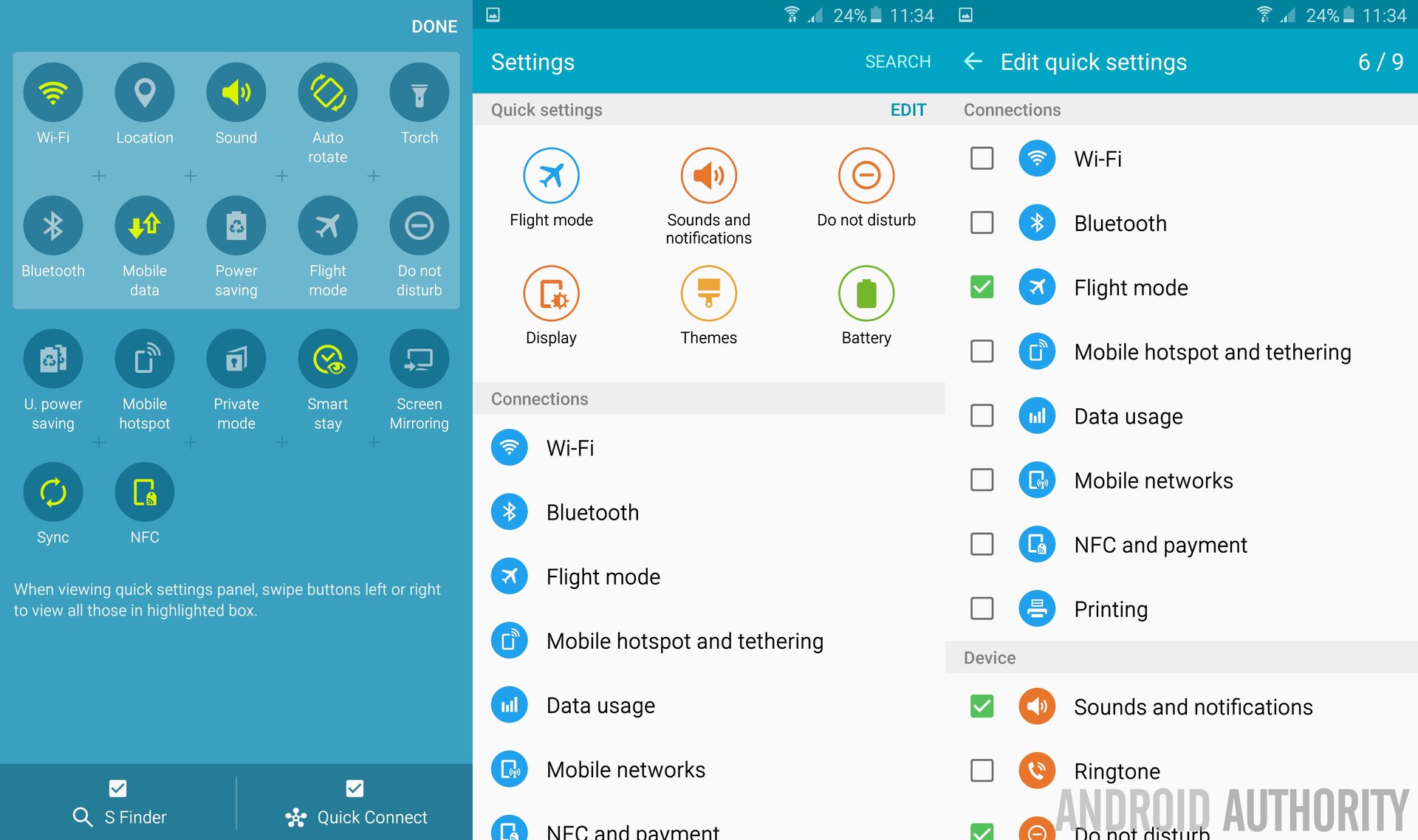
TouchWiz includes a couple of places where you can access specific settings directly without having to scroll through the full Settings page. The first place is on the top of the notification shade and the second is at the top of the Settings page itself. Known as Quick Settings, they can be configured to include the settings which you use the most.
To edit the Quick Settings on the notification shade, pull down the shade and then tap on the EDIT button near the top right of the screen. From here you can drag and drop icons from the bottom half of the screen to the highlighted box at the top. If there isn't enough room then the last icon will shuffle off (its mortal coil) and leave a gap for the new icon. When you are happy with the new arrangement, tap DONE.
To change the Quick Settings at the top of the Settings page, enter the Settings page and then tap EDIT on the small Quick settings bar. Here you can check or uncheck up to 9 different settings which will be shown in the Quick Settings panel. The default is 6 settings in two rows of three. If you add between 7 to 9 icons then the quick settings panel will grow to three rows. Once you are happy with your selection then navigate back to the Settings page by tapping the left arrow at the top of the page.
Spice things up a bit
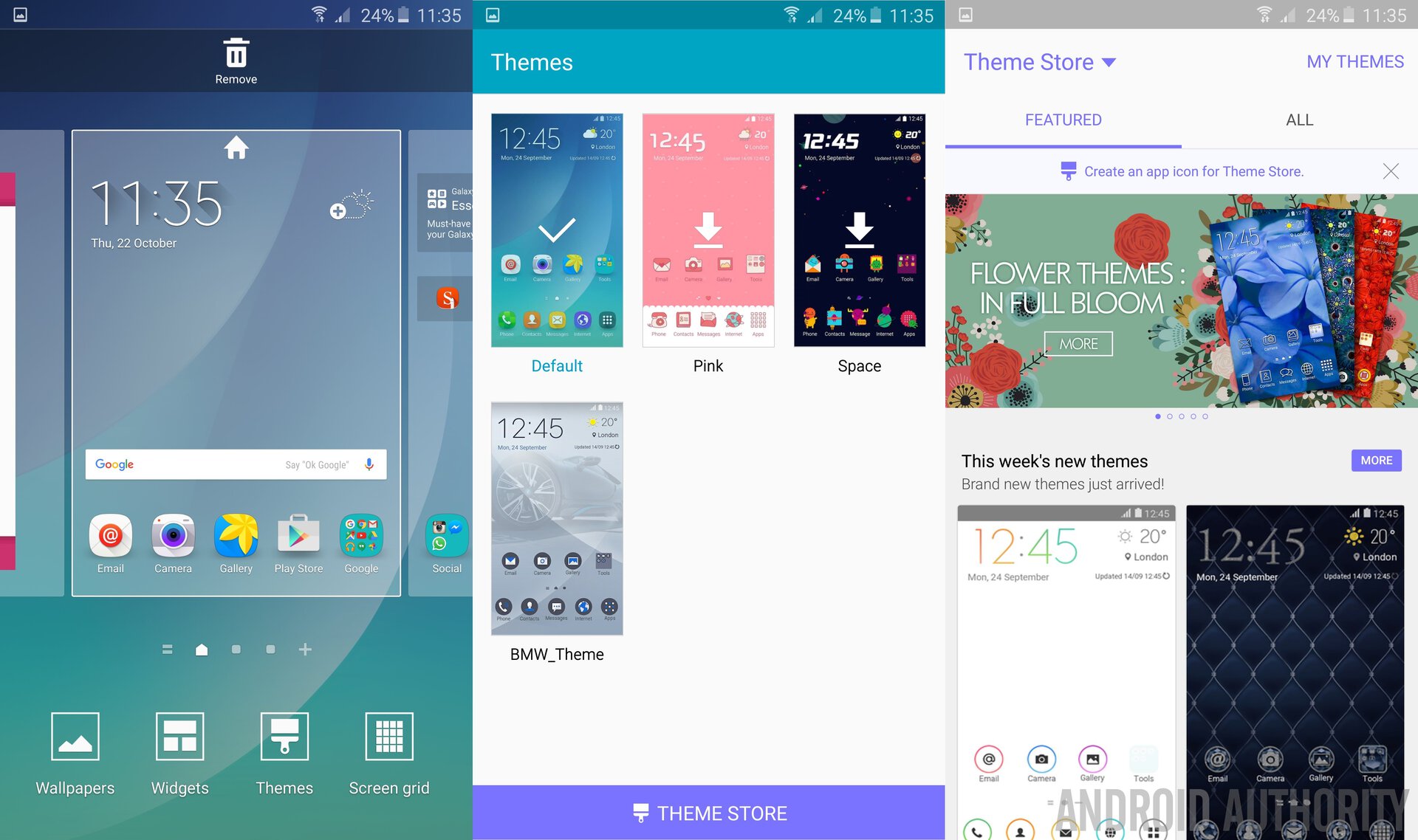
Not only can you change the wallpaper on the Note 5 and S6 (i.e. long press on an empty part of the home screen and then tap on Wallpapers) but you can also change the whole theme of the UI including the icons and the UI color palette. To do this, long press on an empty part of the home screen and then tap on Themes.
By default there are a few themes present in the library, however the real good stuff can be found in the Theme Store. Tap on the Theme Store bar at the bottom of the Themes library page. The Theme Store app will start. Browse through the different themes and tap on one that interests you. Check out the screenshot examples and tap on Read More if you want to see any extra details.
Once you have chosen a theme, tap on Download. You will need to sign into your Samsung account (if you haven't already done so). Once the download is complete tap on Apply.
Bonus tip – get rid of Flipboard Briefing
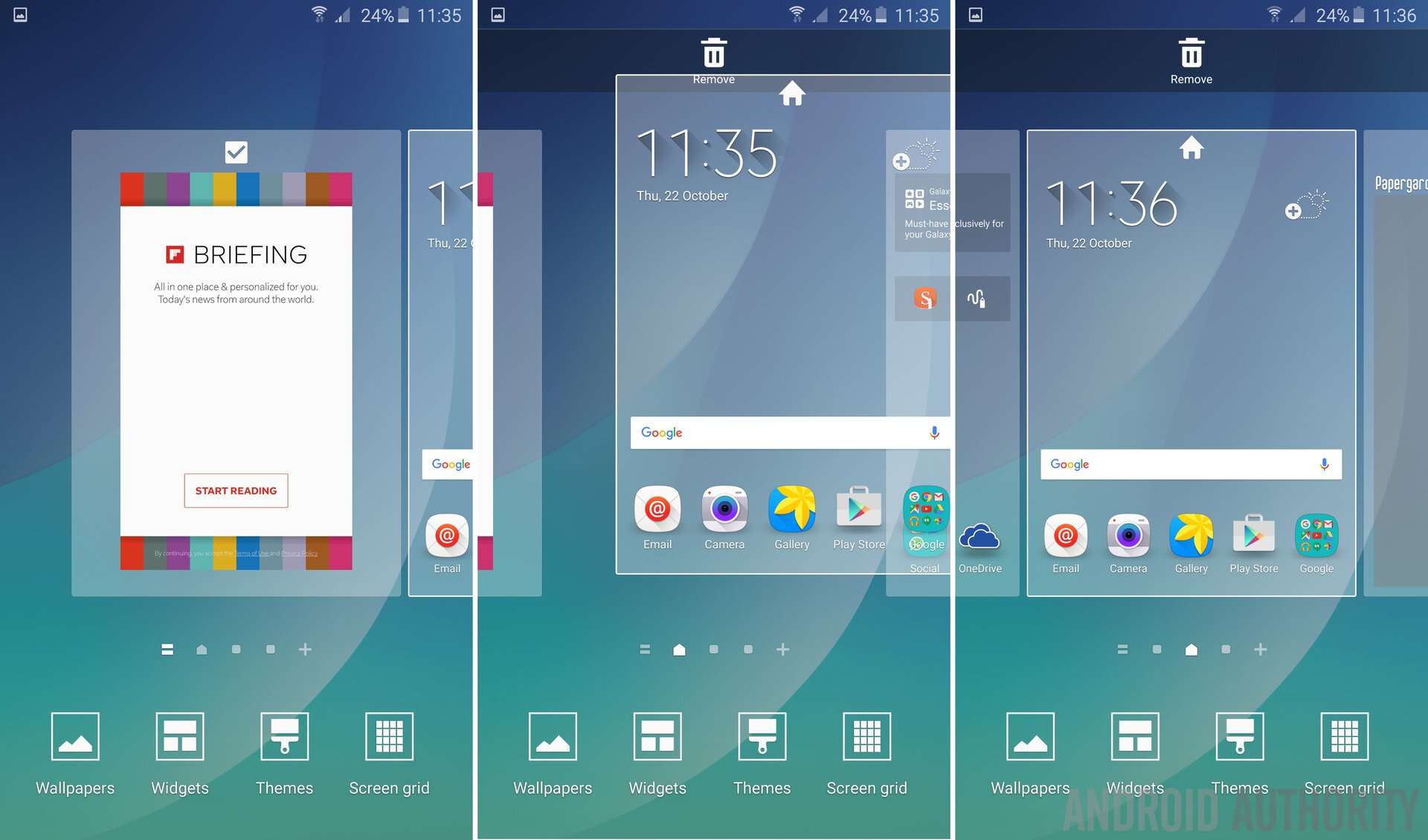
Swiping left from the home screen doesn't start Google Now or display another screen, instead it takes you to the Flipboard Briefing app. You might like this and you might not! If you don't want it then it is quite easy to remove. Long press on an empty part of the home screen to enter into the home screen editing mode. Swipe left to reveal the Flipboard Briefing and then take the check mark at the top of the page to deactivate it. Now press the Home key.
That is it, gone. However there is one small problem. Now you can't swipe left. There is nothing there. If you are like me, you will be used to swiping to the left and right from the home screen. To fix this, long press on an empty part of the home screen again. Now tap on the home screen and keep your finger on the screen. Drag the home screen one to the right. So that the second page now swaps with the first. Press the Home key to exit.
Now when you swipe to the left you can a page and when you swipe to the right. The home screen is how in the middle. You can also add more screens from the editing mode.
Wrap up
So there you have it, my TouchWiz tips and tricks for the Samsung Galaxy Note 5 and the Samsung Galaxy S6. If you have any tips that you want to share with us please use the comments below.
Source: https://www.androidauthority.com/touchwiz-tips-tricks-note-5-galaxy-s6-650321/
0 Response to "Touch Easy Home Icons for Apps Are Enabled but Hidden on Galaxy S6"
Post a Comment